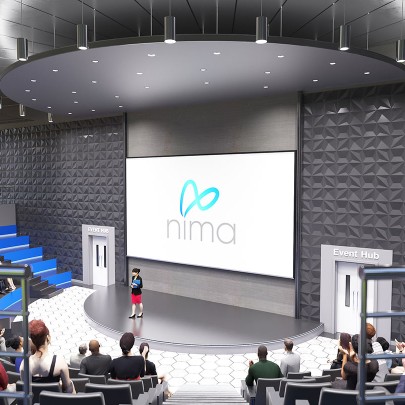December 11, 2024 Industry news
In November 2024, nima, the organisation formerly known as the UK BIM Alliance, launched the Information Management Initiative (IMI) in partnership with the Construction Leadership Council (CLC). The initiative aims to advance digital transformation across the built and managed environment sector by integrating data and information management across asset lifecycles. Its goal is to improve collaboration, efficiency, safety, and sustainability, addressing the evolving needs of society, business, and the environment.
The IMI marks a shift in how information is managed, ensuring data is properly integrated, shared, and maintained. It will play a crucial role in driving the digital transformation of the UK’s construction and infrastructure sectors.
The Information Management Initiative (IMI)
Launched at nima’s Autumn Virtual Conference in November 2024, the IMI introduces a roadmap to 2030 to integrate data across all stages of an asset’s lifecycle—from early conceptual work through design and construction, to operation and eventual decommissioning.

It aims to enhance collaboration, improve efficiency, and address the evolving needs of the built and managed environment.
The IMI encourages organisations to adopt a unified approach to information management, ensuring all teams and stakeholders work to the same principles. This alignment is essential to optimise value, improve health and safety, and deliver social, economic, and environmental benefits.
Unlike earlier frameworks like the UK BIM Framework, which focused on supporting the international BIM implementation standard ISO 19650, the IMI spans wider information management opportunities, from data capture through ongoing use in operations and maintenance to support for the ‘internet of things’ and ‘digital twins’.
The role of GS1 standards
A key element of the IMI’s success will be the adoption of GS1 standards, which ensure consistent and accurate data management across the construction industry. GS1 UK is now working closely with nima to drive adoption as this will facilitate seamless information exchange, improve data quality and reduce errors.
By using GS1 standards, organisations can ensure that data is standardised, traceable, and easy to share across all stages of an asset’s lifecycle. This supports the IMI’s goal of improving collaboration and enhancing efficiency and sustainability across the built and managed environment sector. GS1’s barcode and RFID technology, for example, can be used to track assets and materials, ensuring that stakeholders have access to accurate, up-to-date information when needed.

Being part of the IMI is crucial for GS1 UK. It will enhance awareness of our pivotal role in driving industry standards and reinforce the fundamental importance of our data management frameworks."
Rachel Heaton
GS1 UK's engagement manager for construction and vice chair of Nima
Key features of the IMI
The IMI is structured in three steps:
- Understanding the principles: Organisations commit to understanding and adopting core information management principles, ensuring data is secure, accessible, and maintained
- Planning for implementation: Organisations develop action plans, set objectives, and allocate resources for implementing the IMI framework
- Mandating information management practices: Internal and supply chain adoption of information management practices, ensuring alignment, compliance and continuous improvement
Driving sector change
The IMI is a practical, actionable framework. As nima’s chair, Dr Anne Kemp OBE, has emphasised it is about delivering real-world outcomes by reducing ambiguity and complexity in information management. Supported by an evolving ecosystem of standards, guidance, tools and training, the IMI extends beyond the goals of the Transforming Infrastructure Performance Roadmap to 2030.

If nima is to fulfil its vision, it needs to provide the means for a coming together of people and organisations wanting help – with this being the larger proportion of our energy and focus, with a smaller coming together of technical expertise serving the needs of the wider sector. This then is the driving principle behind our refreshed strategy and the incentive behind changing our name.”
Dr Anne Kemp OBE
Chair, nima & Fellow and technical director for digital engineering, BIM strategy and development, AtkinsRéalis
The initiative aligns with the CLC’s focus on high-quality, trusted information to support a safe, healthy and sustainable built environment. By embracing digital integration, including GS1 standards, the IMI aims to enable the UK built and managed environment sector to meet future demands.
Building a sustainable future
The IMI drives data-driven decisions that foster a more productive, sustainable, and resilient sector. It aims to standardise how organisations specify, procure, deliver, store, and exploit data by 2030. This aligns with broader government objectives related to building safety and sustainability.
The IMI’s standards will eventually apply to most built assets, in line with the Building Safety Act’s requirement for a "golden thread" of information for higher-risk buildings. Industry leaders believe these standards will soon become the norm for investors, owners and insurers.
A call for collaboration
To ensure the IMI’s success, nima is calling on the wider industry to participate.

The initiative has attracted founding sponsors, including AtkinsRéalis, BEAMA, BSI, Data Clan, and Morta, along with supporters like 1Spatial, BIM4Water and McGee.
Such backing is essential in promoting the IMI’s core principles and ensuring its adoption across the sector.
With the support of nima, the CLC and industry leaders, including those championing GS1 standards, the IMI will help shape a more collaborative, efficient, sustainable, and safe built and managed environment sector.
For more information on the IMI and to get involved, visit the nima website: wearenima.im



